The following excerpt is from the book: CANYON COUNTRY EXPLORATIONS & RIVER LORE: The Remarkable Resilient Life of Kenny Ross, by Gene M. Stevenson. The book was written about Kenny Ross, one of the forgotten personalities on the Colorado Plateau whose major influence on river running in the Southwest had been previously overlooked.
In the fall of 1959 Rusty Musselman heard about a Disney movie that was in the works about John Wesley Powell’s famous river trips down the Colorado River in 1869 and 1871 that was being filmed along the Colorado River upstream from Moab, with iconic background features in Professor Valley including Fisher Towers, Priest and Nuns, and Castle Rock. Almost all close-up shots of the movie cast were taken along a sandy beach near the modest White’s Rapid.
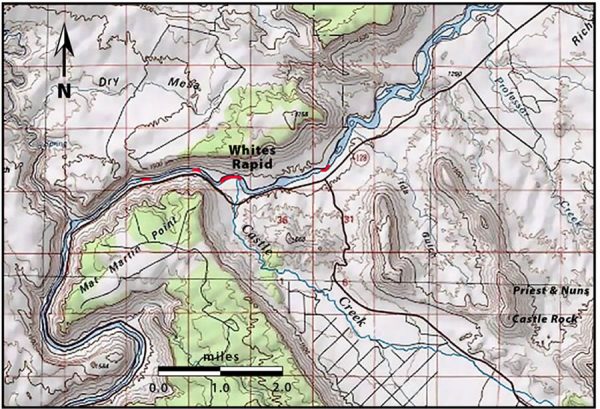
Esri Arc/GIS
USGS topographic map)
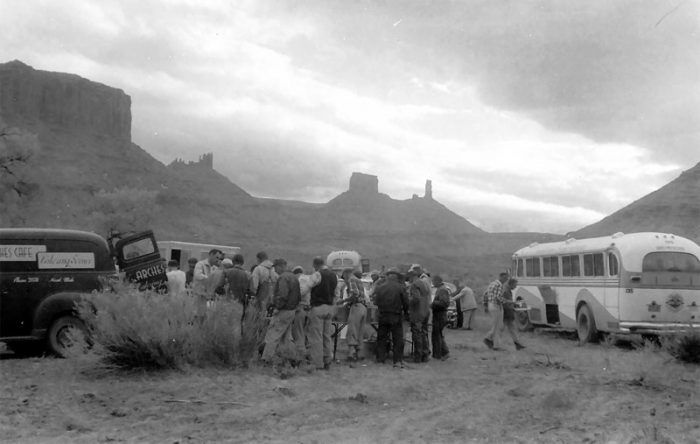
Rusty thought there might be a need for some real boatmen with river boating skills, so he and Kenny talked it over and decided to go see what it was all about. The director, William Beaudine, took one look at Kenny and saw that with a little makeup Kenny was the perfect double for the star, John Beal, who was playing the part of John Wesley Powell.
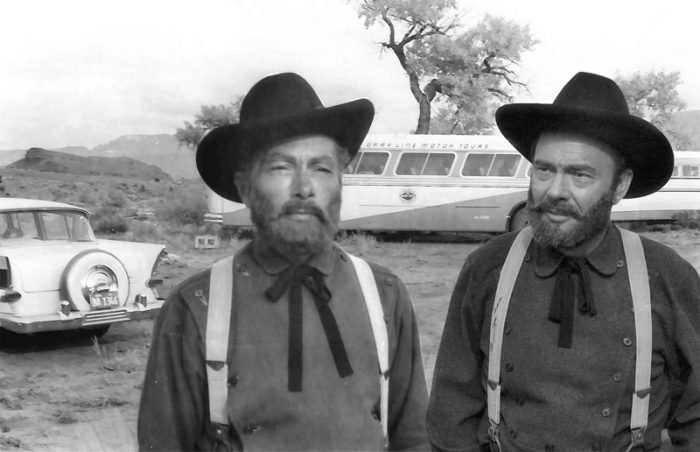
Kenny’s river boating experience couldn’t have been more opportune. Rusty ended up doing some roustabout work, but he also substituted for the youngest actor, David Stollery, a “Mouseketeer” in a scene where his character, Andrew Hull, was thrashing oars trying to negotiate a rapid.
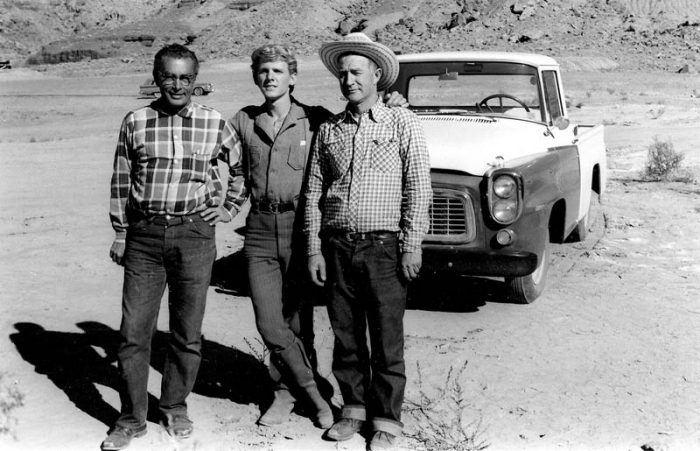
The production had started as a movie short or docudrama for the weekly TV Disney show “The Wonderful World of Disney” but was soon expanded into a full length movie. Hollywood star actor, Brian Keith, got top billing playing the role of the rebellious William Dunn who supposedly led two brothers, Oramel G. and Seneca Howland to their demise when the three men parted ways with the Powell river party in the lower Grand Canyon at a rapid that became known as Separation Rapid. The Howland brothers and Dunn were never seen or heard of again, and for many years were considered to have been killed by Indians, and that was certainly the version adopted for the movie. [Author’s note: in his extraordinary book Under the Banner of Heaven, Jon Krakauer, 2003, p.238 described a significantly different, well documented version indicating that the three were killed by Anglos inside the LDS warehouse in Toquerville, Utah].
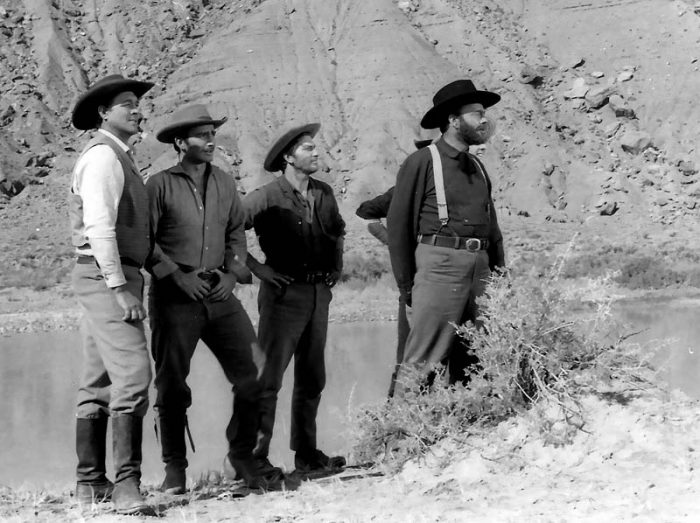
If that was the only fact that was wrong in the “docudrama” then one might look past the old misconception, but the movie was so horribly wrong in so many uncountable ways it gained notoriety by movie critics as one of the ten worst movies ever produced by Hollywood! Otis “Dock” Marston was listed as the Technical Assistant, but his input must have been completely dismissed. Even John Wesley Powell’s own accounts of his journeys down the Green-Grand-Colorado Rivers in 1869 and 1871-72 are merged and his embellished accounts in The Exploration of the Colorado River of the West and Its Tributaries must be read with a healthy dose of skepticism.
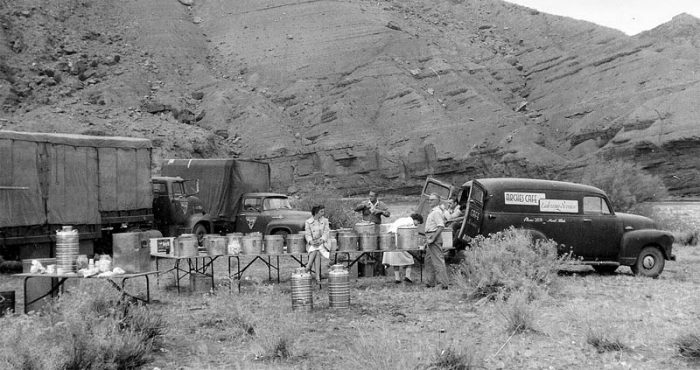
All real river action scenes of rowing calm water or running rapids (the White Ranch rapid) or camp scenes were filmed in the stretch of the Colorado River from the confluence with the Dolores River down past Dewey Bridge to the small rocky rapid at White Ranch. A road (now Utah Highway 128 and referred to locally as “the river road”) paralleled the river and followed it along the northeast side which made it easy for film crews to maneuver for all the scenes. All river scenes show the river running from right to left, indicating the camps were always on river left (RL).
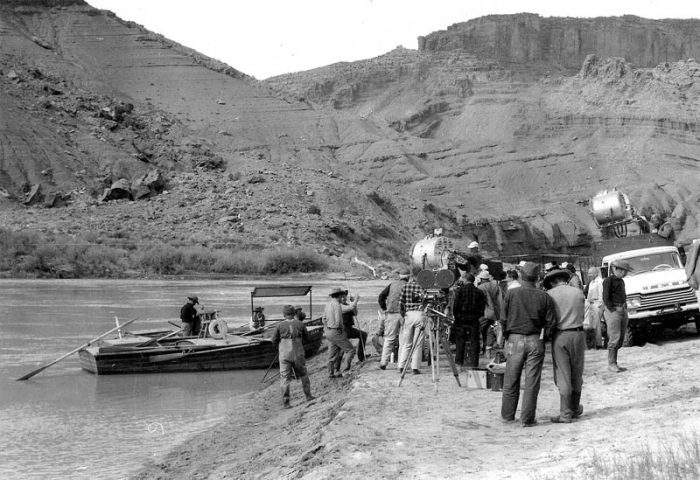
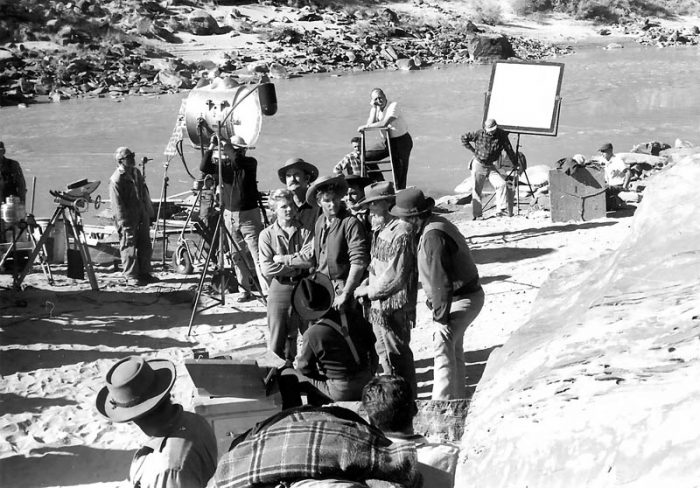
The scenery in these shots was actually real (in Technicolor) and consisted mostly of Mesozoic and Permian red strata that outcropped along the river northeast of Moab. But all of the “close-up action” scenes of the actors are superimposed “studio shots” of them getting splashed and bounced around in rocking boats with movie footage of the Inner Gorge of the real Grand Canyon as backdrop. The Inner Gorge is a narrow, eight-hundred to a thousand foot-high walled corridor where the rocks consists of Precambrian-age very dark-colored metamorphic schists dissected by diagonal streaks of cream-colored dikes composed of granite. Even to a non-geologist these background rocks couldn’t be more strikingly different. And the movie scenes continue to alternate at mind-numbing speed between the narrow inner gorges of Grand Canyon to the open valley near Moab. Only one segment of the movie showed a wooden “Powell boat” actually running a real Grand Canyon rapid, over and over again, but from different camera angles; the majority of the river action took place in the red rock open canyon country northeast of Moab. Kenny Ross loved telling stories about his involvement in this cinematic fiasco and his son, Doug commented about the movie:
William Beaudine directed this Disney mess, with John Beal as Powell, Brian Keith as Bill Dunn, and Ben Johnson as George Bradley. One of the Disney Kids, David Stollery, played young Andrew Hull. He was Marty on the old Disney “Spin and Marty” show, from the 50’s…a godawful Disney kid show of some kind. Dad really liked the kid, and had some great stories about Brian Keith, et al. The movie was released in 1960, and Kenny worked on it for about seven weeks in the fall months, Oct-Nov, out of Moab. I think the photos are all 1959.
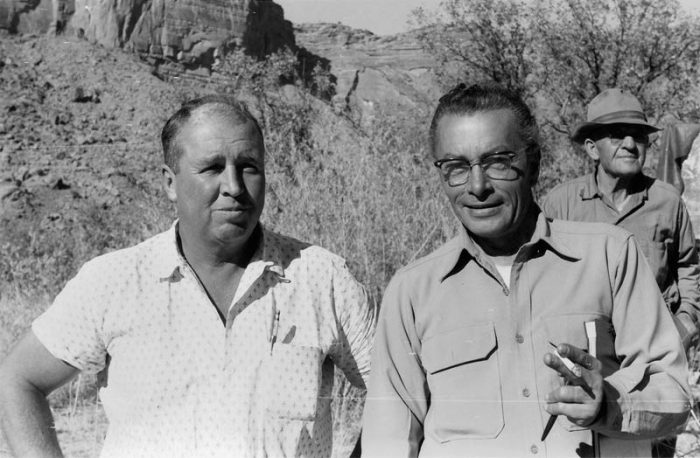
The ‘star’ John Beal and Kenny were absolute dead ringers for each other with the make-up. Dad had gotten on the scene first, just to run the boat and had no idea he’d end up being the stunt double. There had already been some water scenes shot when Beal showed up, and he had to shave his beard he’d grown so they could match Kenny’s. When makeup was done, the resemblance was uncanny. Close enough that Dad showed up in the movie in a couple of accidental close-ups and the directors left the scene in just as it was. Turned out Beal and Dad had been born in the same county a month apart, in Nebraska; pretty funny. There’s a photo somewhere of the two “Powell’s” for comparison. Dad complained the damn stump dummy that fitted over his hand and arm just wore holes in him and he still had scars to prove it.
If this movie had been made in our modern era, it was so bad it would have gone straight to DVD, never to see the silver screen. Bet it lost money. But the Old Man had a hoot.
In his interview with Kenny in 1986, Herm Hoops asked Kenny about the movie set and about rowing those boats and if he did a lot of takes? Kenny replied:
The one place on the Green, Upper Disaster Falls, where they lost the ‘No Name’ we pretended to run Disaster Falls and we didn’t actually run them. We ran Disaster Falls at the mouth [the Dolores River]. We started in quiet water, passed under Dewey Bridge but you know the bridge didn’t show and then quit and went on down to White’s Ranch, you know and ran the little rapid behind the ranch house; and we were filming the loss of the No Name there and that’s a pretty nasty little rapid at times; rocky as all get out. I had been complaining because those boats had motors, only they were hidden underneath the rear deck; you had to lift the lid to get to the motor; we had gone chinchy [cheap, low budget], which Disney people are famous for, and they’d gone chinchy and only each boat had just one motor that would start electrically. And the rest you had to jerk the line to start em and there were two motors on each boat, and so I hollered so much about this business of having to stop, maybe in a dangerous place; and the special effects man didn’t like that the propeller wash would sometimes show, when he followed the rear of the boat with a camera.
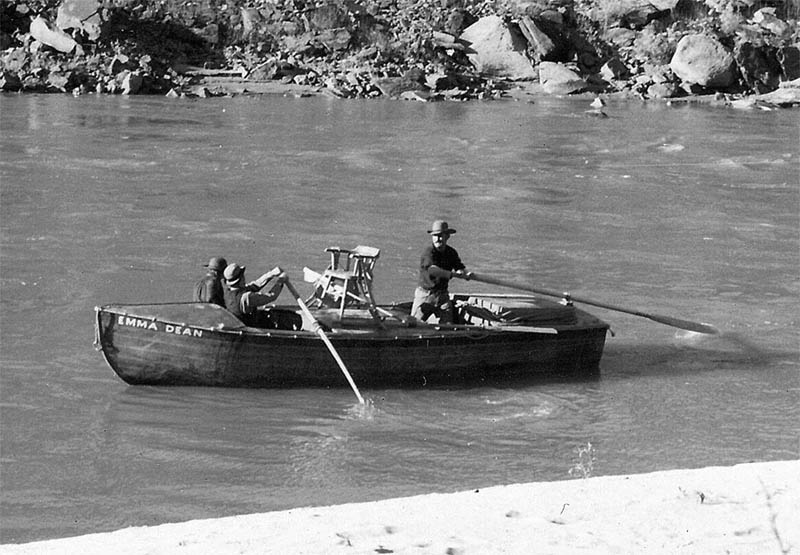
And so he boarded up where the boat turned up this way in back. Had boards put on there and didn’t say a word to me about it. And I was running the boats, at least I was commanding the boats, and so I started down through that rapid with one boat, the Emma Dean, started down through it and the first thing that happened was that both motors cut out; one motor cut out then the other motor cut out. They weren’t getting any air, you see. And so, we spoiled that shot. Managed to, the next boat followed me in and we kind of wrecked both boats! Well, we didn’t wreck em exactly, but we messed em up. Yeah, messed em up so that the special effects department had to work all night to get things going again! And they were disgruntled about it. And I tried to explain – motors won’t run without air; you have to let air get in there before the motors would run…..so that with every toss of every wave, why, the boat would bob and gulp in a big mass of air, which would do you until you hit another one! Well, I was mad….oh I was so mad about that because the next day, why all the boats, see just the two boats that had messed up in the rocks were fixed that night, so we could shoot the next day, and the other two boats, they didn’t fix them; they needed to gulp air too, but we finally ran the boats through OK; I just reached down and I only had one arm you know.
Herm asked: “How did you do with one arm?” Kenny replied:
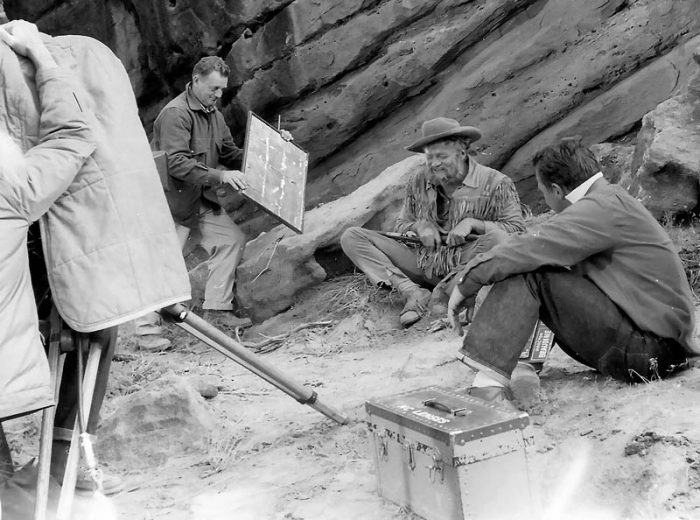
You just had to play it right to the camera; I had a boot on here; I’ve still got scars from that damn boot…..after all these years! But, just turn the boat toward the camera, you never let the camera catch you broadside; this way….your arm would be too long! So we had trouble with the last two boats and one of them was the No Name, so it didn’t matter, the No Name didn’t have a motor on it anyhow, so there’s just the one, so I just reached down and I got hold of that board that they spliced in there, and jerked! Well, we went through, we got all four boats through, we got three boats through then we went back up to wreck the No Name. And it was all elaborately planned. I had studied it for a couple hours the day before, so we had hidden cable wire, tiny cable underwater. Come down and hook an eye, eye screws in the boat so it would guide the boat right through because, you see, when the No Name was wrecked it went broadside on a rock, which, as you know, is the best way to turn a boat over and mess up a boat. And, so, we set it up and I got in the boat. Oh yeah, the No Name was part of a story that was all fouled up by the writers. But Bo Dean didn’t care; he was a slap dash funny kind of director. Why, he was just great! And if something wasn’t just right, he’d make it right….on the cutting room floor; so we hooked that all up to the rock and the rock was an artificial one. I kept the rock for years. It looked like the real rock that was being struck.

After the movie action scenes were done, Kenny and Rusty came back home and according to Doug:
They brought home the fake rock (wreck of the No Name) in the back of the ’59 International pickup and parked it in front of the house. Kenny and Rusty got some good reactions out of the Utah weigh station guy at the port of entry at Monticello too. That rock later ended up on the roof of Rusty Musselman’s Cow Canyon Trading Post.
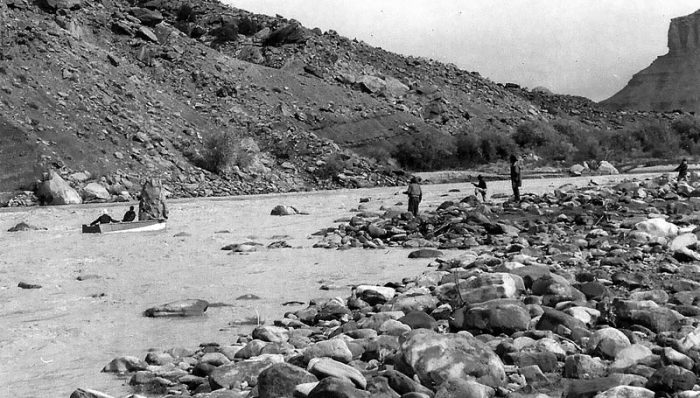
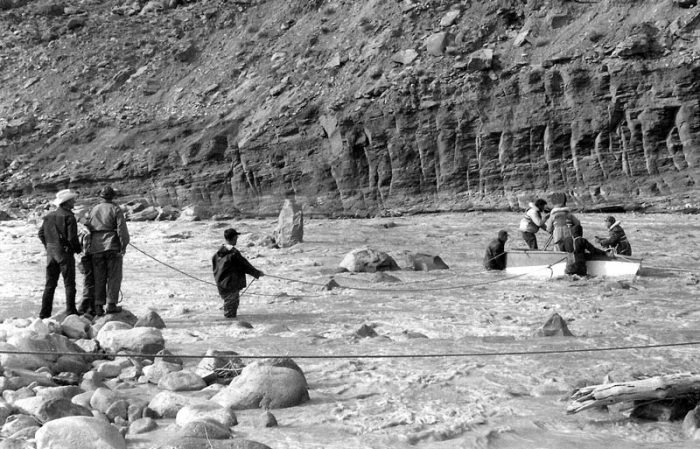
Jerry Howell, my Bluff neighbor, said that he remembered the big rock when he was a kid and wondered where it came from and apparently the fake rock remained on top of the trading post for years, but no one who lived in Bluff at that time could find a photograph of it; too bad.
To comment, scroll to the bottom of the page.
Zephyr policy: REAL NAMES ONLY on Comments!
Don’t forget the Zephyr ads! All links are hot!

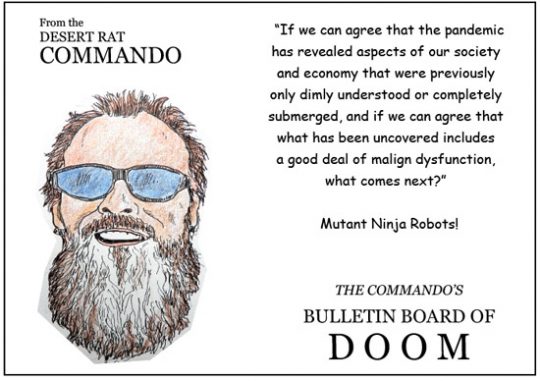
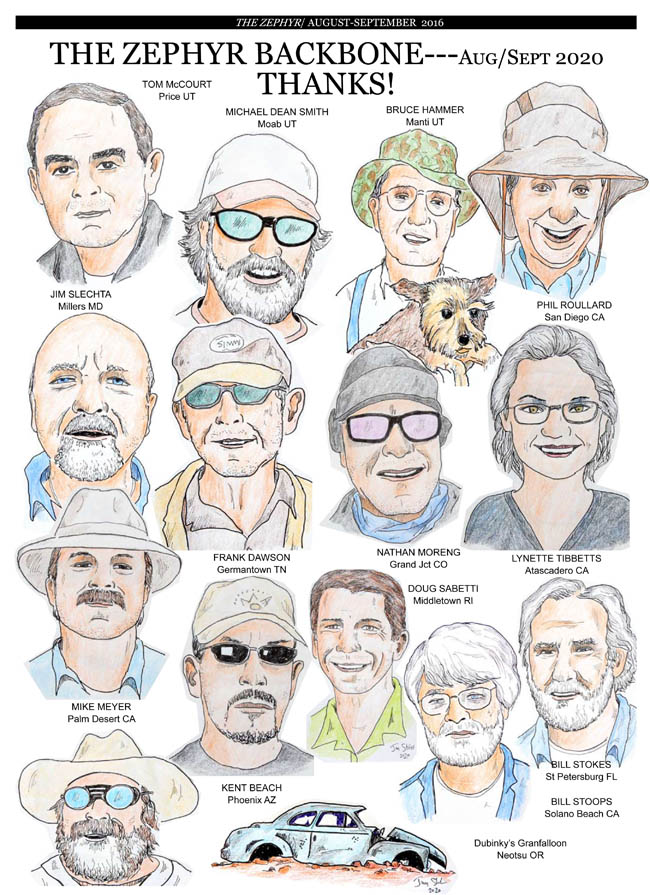
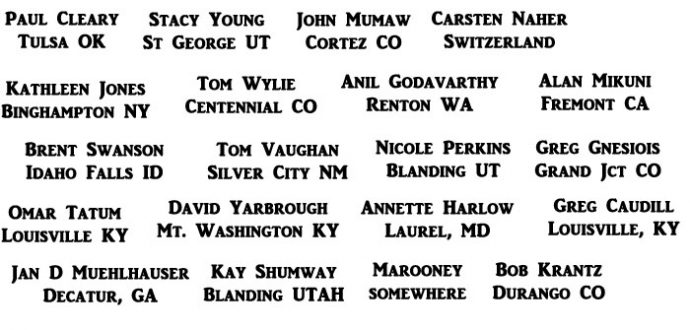

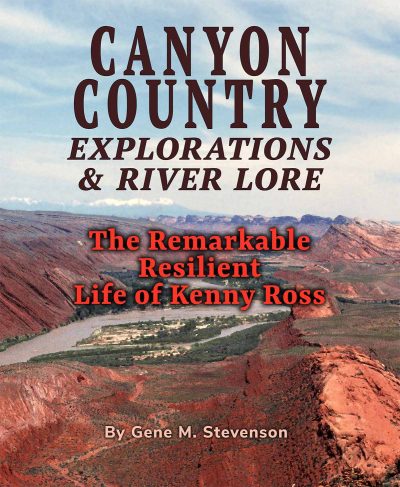

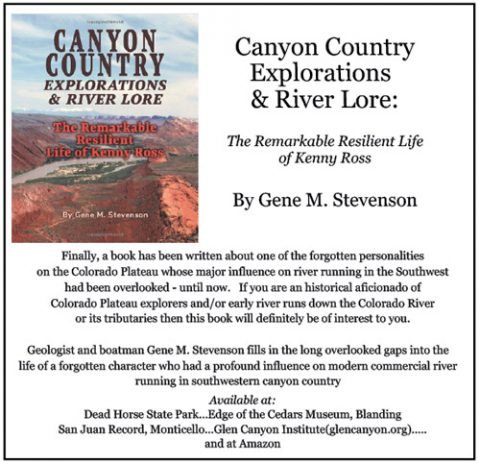
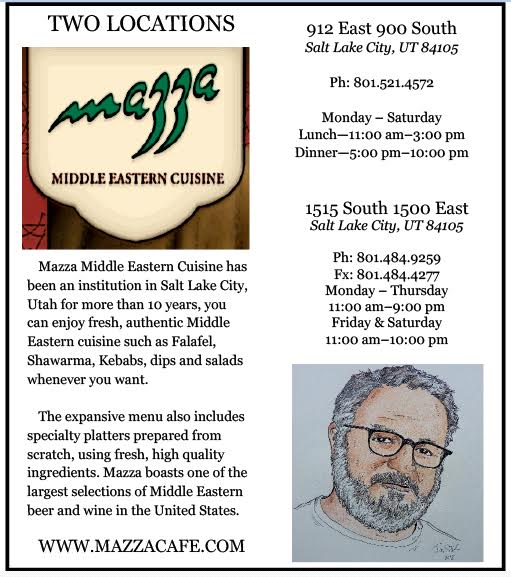
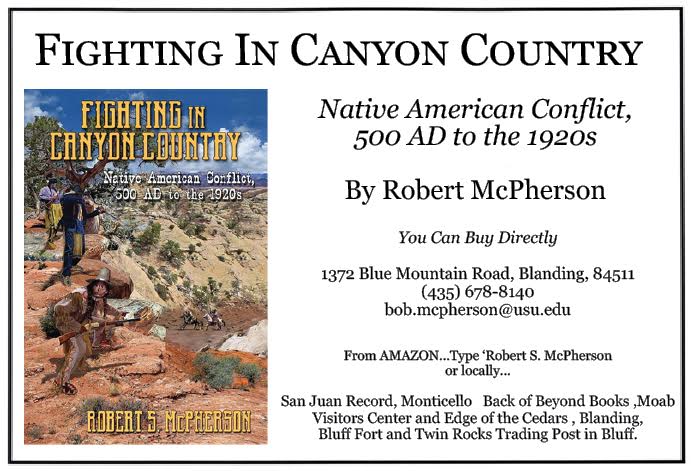
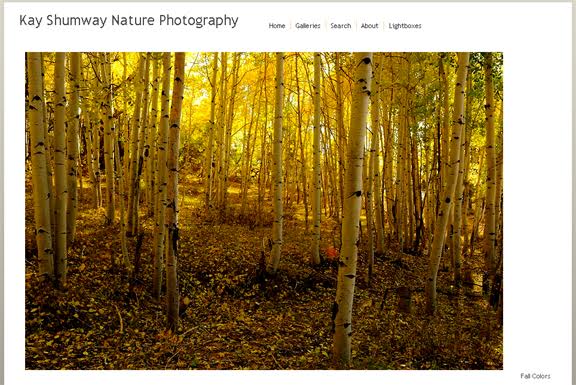
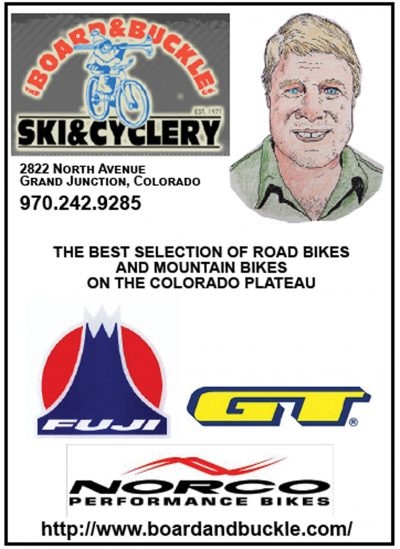

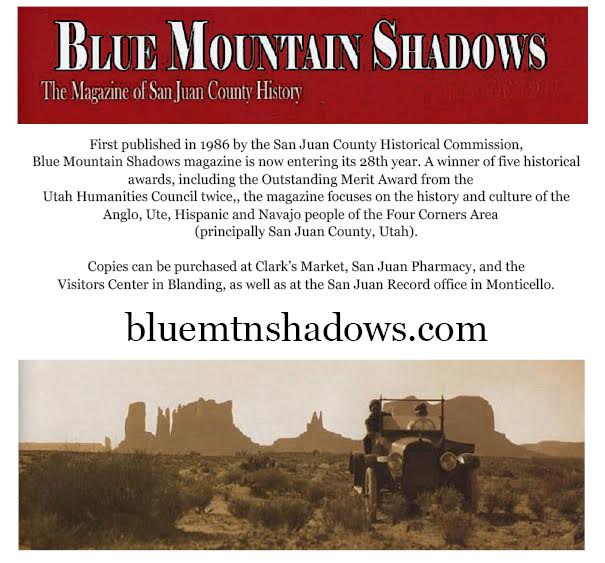
Yeah a lot of people don’t seem to like this one.
Thanks very much for this article. I’m sure the movie is as bad as everyone claims, but I’m just trying to get it borrowed from a library now, so I haven’t yet seen it. In my house, the movie’s reputation was all about my mom’s cousin Rusty Musselman being involved. And the fiberglass rock on top of a business in Bluff where I lived for a while before moving to Moab.